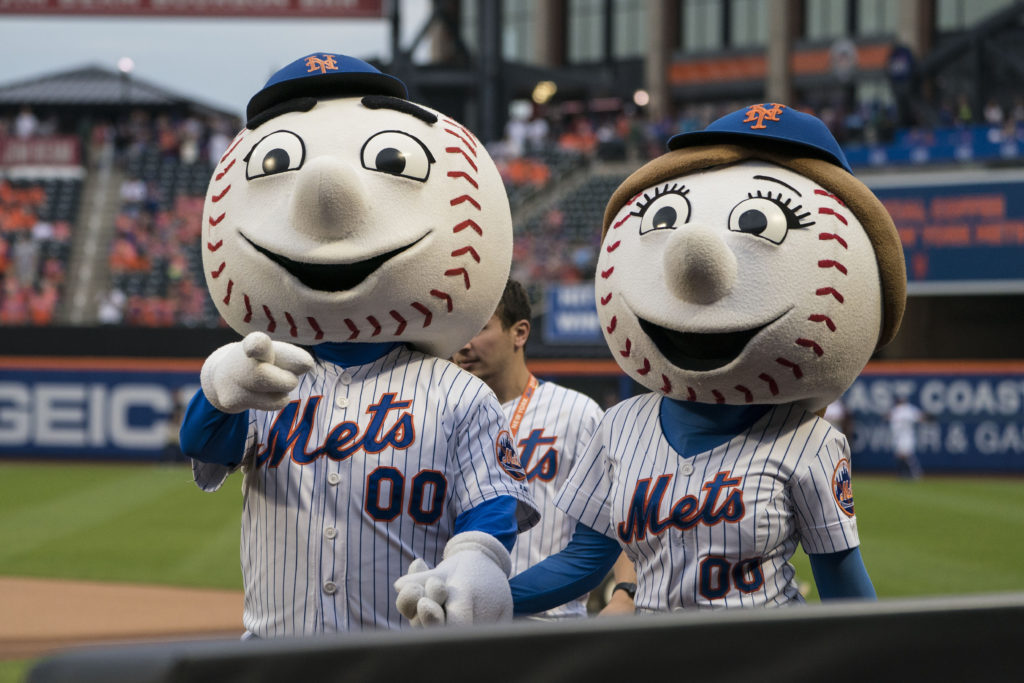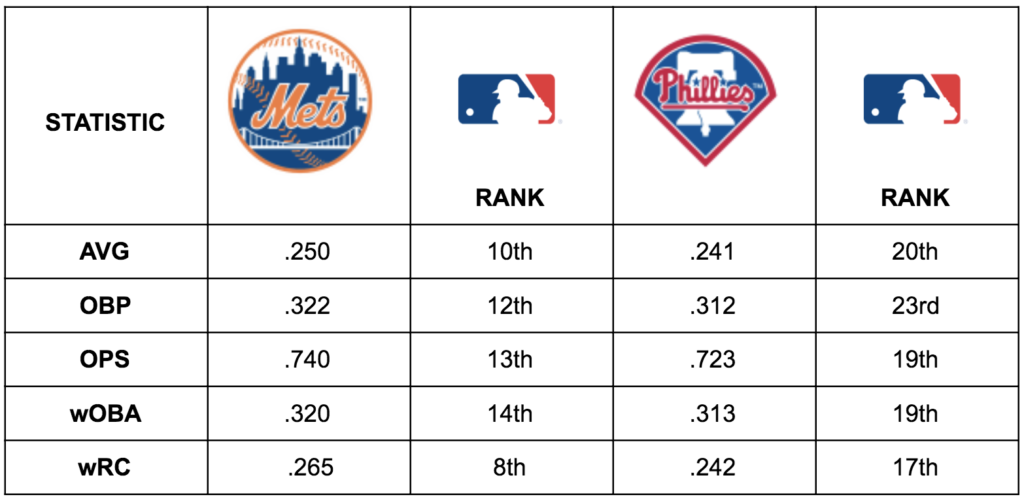Ad Disclosure
Here’s Why the Phillies Can’t Master the Mets
By Bob Wankel
Published:

According to FanGraphs, the Phillies enter play today with a 4.4% chance of winning the National League East.
I think we all understand at this point that – barring a miracle – the Phillies will miss the playoffs. When that inevitability comes to fruition at some point next week, their inability to beat up on “inferior opponents” like the New York Mets will be frequently cited as a reason why. With a disappointing 7-11 mark against the Mets this season, and only tonight’s game between the two teams remaining, the Phillies have already guaranteed themselves a losing record to the LOLMets for the seventh-straight year. It might be hard to believe, but they are what feels like an impossibly bad 49-82 against this bum ass team since 2012. Obviously, the Phillies were going through a transition and the Mets briefly flourished during this period, but the story was supposed to be much different this season.
The upstart Phillies spent much of the spring and summer as a viable postseason contender, while the Mets have been a fourth-place afterthought. How could the Phillies let a team they were so comfortably ahead of in the standings own them again? We asked ourselves this question in mid-August when they lost three of five at home, last weekend when they dropped two of three at Citi Field, and again on Monday night when the bullpen imploded late to lose the series opener.
It’s time to handle business against bad teams. Lesser teams. It’s the Mets, for fuck’s sake! What gives? I mean, how many times did we ask ourselves this question after each wasted opportunity?
Well, I think I’ve finally found the answer. A troubling thought: what if the Phillies can’t beat the Mets because the Mets are (gasp!)better than the Phillies? Let the repugnant stench of that statement waft gently from your screen directly into your face. Let it plague your being.
Indeed, such a statement is as palatable as eagerly entering the office bathroom to unload the toxic brew of your wing, beer, and coffee intake over the previous 11 hours only to be met with the aromatic smog of a coworker’s dump. Likewise, the reality that the New York Mets are possibly superior to the Phillies unpleasantly shocks the system much the same way the particles from another man’s asshole commandeer one’s olfactory receptors.
We have learned this season that the Braves are a problem. They’re young, talented, and should only continue to improve. As for the Nationals, forget Bryce Harper’s potential exit. At worst, they will return a talented roster and appear to have a pair of young stars in Victor Robles and Juan Soto. But the Mets? An Issue? Well, yes.
The Mets’ decision to keep Jacob deGrom at the trade deadline signaled New York’s belief that it could build a winner in the short-term even if they fail to re-sign the potential National League Cy Young Award winner when he becomes a free agent after the 2020 season. It’s not a stretch.
Noah Syndergaard and deGrom still make for a dominant 1-2 punch, and the unexpected resurgence of former top prospect Zack Wheeler gives the Mets one of the NL’s best trio of starting pitchers. Would you take that over Aaron Nola, Jake Arrieta, and whoever the Phillies’ No. 3 starter currently is? I would both right now and next season, unless that spot is filled by Patrick Corbin this winter.
But that’s a bit subjective, so let’s get some numbers involved. Here’s a look at how the two teams’ rotations have performed since the All-Star break:

This disparity in performance is particularly startling when you consider the Phillies’ starting rotation was the primary reason the team stayed in contention for as long as it did this season. Moreover, while it would be disingenuous to gloss over a Mets’ bullpen whose 4.99 ERA is the game’s third-highest this season, in a way, it makes the Phillies’ inability to expose such a glaring weakness all the more confounding. And about the offense…
A simple search will show the Phillies just barely edge out the Mets–widely considered one of the worst offensive teams in baseball–in several traditional and advanced team batting categories this season, but a closer study of the second half numbers reveals some troubling and surprising truths:

Certainly, the Mets have some work to do in addressing the lineup’s holes moving forward, but Brandon Nimmo and Jeff McNeil are two young players with considerable upside that can be paired with the solid bat of Michael Conforto as a quality start, and as you can see above, the Mets are already outperforming the Phillies. Moving forward, do the Mets really have more uncertainty with their lineup than the Phillies?
This exercise isn’t meant to be construed as a hot take that the Phillies can’t be better than the Mets next season. They can, but it’s certainly not a forgone conclusion, either. And it should certainly help solve the mystery over why the Phillies have blown so many opportunities against them this season. It may seem like the Mets are a lesser opponent, but as we know, things are often not what they seem.
Bob Wankel covers the Phillies for Crossing Broad. He is also the Vice President of Sports Betting Content at SportRadar. On Twitter: @Bob_Wankel E-mail: b.wankel@sportradar.com